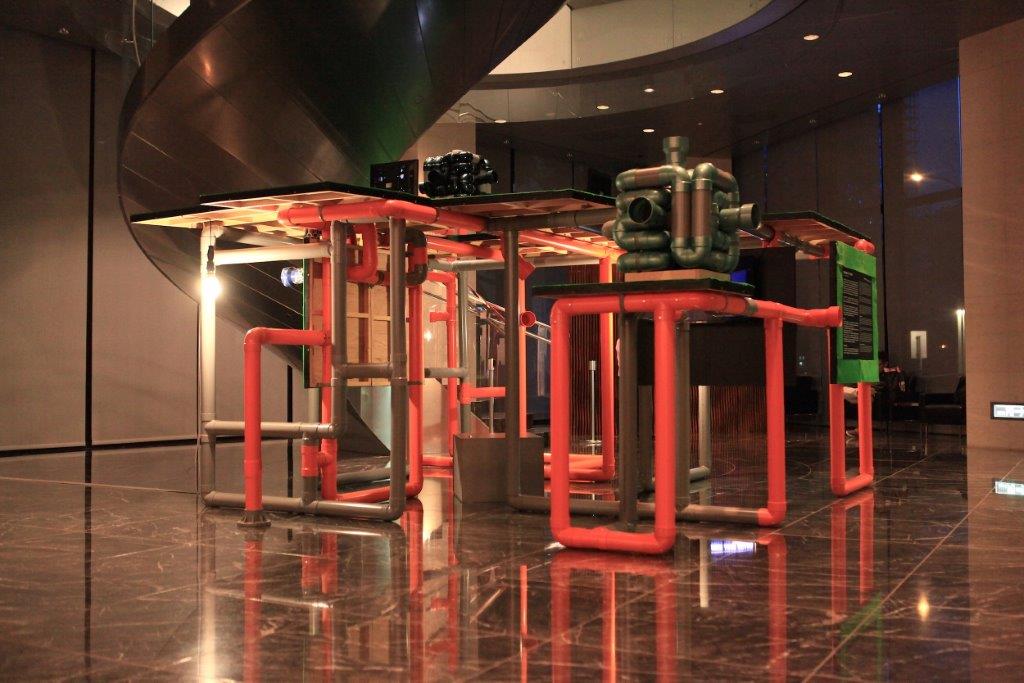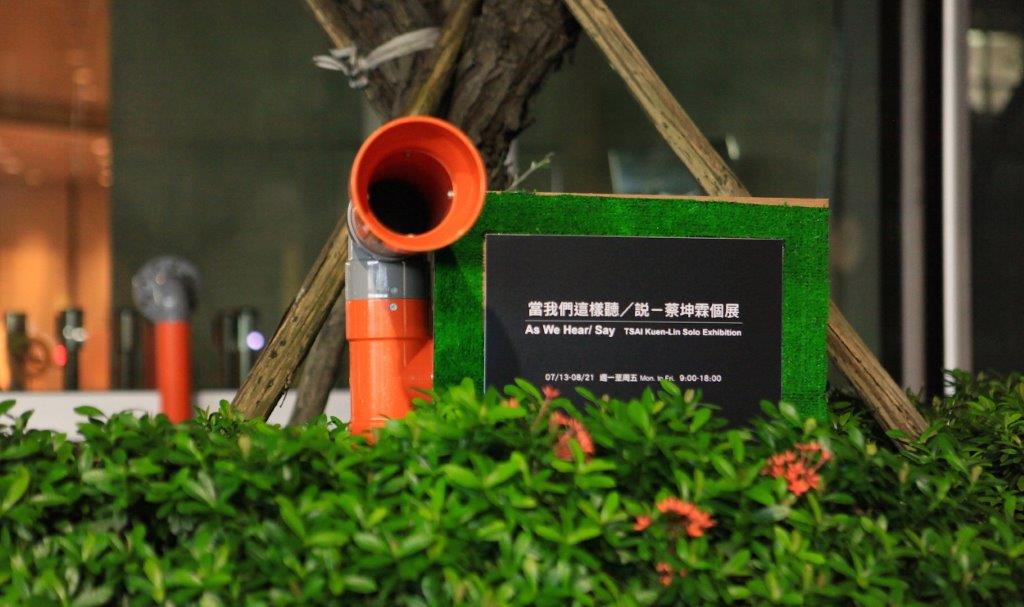
As We Hear/Say ── TSAI Kuen-Lin Solo Exhibition
Time | 2015/07/13- 2015/08/26 09:00-18:00, Monday to Friday
Venue | 1st Floor Lobby of Taishin Holdings Building
The exhibition is free of charge.
The work, As We Hear/Say, is an installation that could be disassembled, re-customized, and reconstructed for a chosen site. Such a moveable installation is suitable for this overcrowded era, as the work could travel for exhibitions, adapting and adjusting its form accordingly. The presentation of the work is based on the concept of a personal museum as the space created out of the installation could also be used for document display, making the installation itself an exhibition site. This format also reminds people of the moveable stands on the streets in Taiwan, such as the tofu pudding wagons, the sticky rice cake trolleys, the fishmonger trucks, and the one-person street artists that wear all their musical instruments on themselves. These living styles are produced as a result of the corresponding difficulties in life. Similarly, as a Taiwanese artist, I also have to face similar challenges in life and to come up with solutions to overcome these challenges through art creations—this concern has, nevertheless, become distinctive as an artist from Taiwan.
The exhibition is consisted of two parts. The first part incudes two previous sculptural sound works displayed on the installation and one sound project centered on “participation,” along with other related documentation (such as video and sound samples collected from workshops); the other part includes two new site-specific works, Landscape of Taishin and Sounds of Taishin. The materials for the two new works are collected from the daily environment of the tower of Taishin Financial Holding. They are, respectively, the view from the rooftop of the corporate building and all kinds of sounds happening in the office.
As unseen yet existing visual elements (space) and heard but unacknowledged sounds (time) are extracted, integrated, simulated and relocated, it is hoped that audience may be stimulated to reconsider the taken-for-granted, daily environment. In the meantime, through the pipe system of the installation, one could also interact with the sounds collected at different places at different times. Namely, the pipe installation is itself a site-specific work for the exhibition, initiating changes in the visual, auditory and physical perception of the exhibition site; meanwhile, the installation also shoulders the contents of past projects as well as memories of the other places and times, delivering to the audience new perceptual experience of the Taishin space.

Artist Statement
For me, the process is always much more important than the outcome, whether it is about facing life or regarding art creation. Similarly, the quality of the relationship between people is determined by the continual interactions between them after the moment of encounter, meaning the process determines the final quality. However, nowadays the chance of people meeting one another is greatly reduced as people are spending more time with machines. Through the electronic circuits forming the Internet, one seems to possess the whole world; yet, one might have nothing at all in reality.
Therefore, in the attempt to use my work as a communicative medium, I try to connect two unfamiliar points through my work. The consequent output, invisible might it be, is the valuable result I care about, which is also the core purpose of my art.
The plastic pipes are the most frequently used material in my work because what the material represents fits perfectly for my artistic concept—the pipes do not belong to the beginning or the end; instead, they serve as a medium of connection and communication, a medium that the modern world relies on to sustain its existence. I use its characteristics of “connecting” and extend it into a concept of encounter and organization. By doing so, I introduce the distant sounds to the site through the pipe system, which also functions as a sound-delivering system that connects people for interaction and communication. With the overall design, the installation is designed to invite the audience to physically enter the interactive mechanism of the work without having to put up words of instruction.
About the Artist—TSAI Kuen-Lin
Born in Tainan, Taiwan, in 1979, TSAI Kuen-Lin holds an MFA degree from the Graduate School of New Media Art, Taipei National University of the Arts. He has been invited as the artist-in-residence in Kogannecho, Yokohama, Japan; and his works have been collected by White Rabbit Gallery (Australia), Taiwan Design Center, etc. While using plastic pipes to create his works, he also uses wood as materials and creates two-dimensional paintings in recent years. His work guides the audience to take part in the issues he concerns about in the process of participation.
